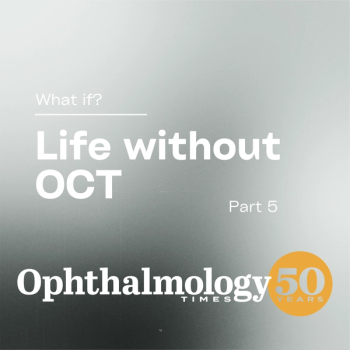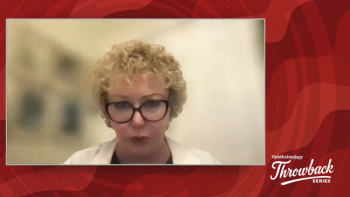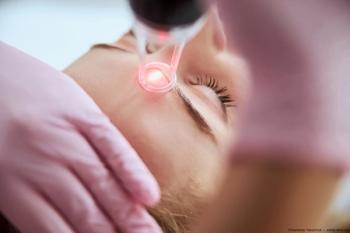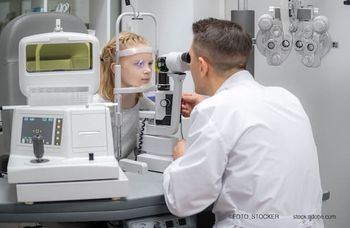
Encapsulated trabeculectomy blebs resolve in study
Houston—Filtering bleb encapsulation after trabeculectomy seems to respond well to tapering topical corticosteroids alone or in conjunction with IOP-lowering agents. Withdrawing steroids appeared beneficial for lowering the IOP compared with continuing the use of steroids to prevent inflammation, according to Sheila Bazzaz, MD.
Houston-Filtering bleb encapsulation after trabeculectomy seems to respond well to tapering topical corticosteroids alone or in conjunction with IOP-lowering agents. Withdrawing steroids appeared beneficial for lowering the IOP compared with continuing the use of steroids to prevent inflammation, according to Sheila Bazzaz, MD.
"Encapsulated trabeculectomy blebs, also called Tenon's capsule cysts, are complications of glaucoma filtering surgery that occur in a fair percentage of cases-from 8% to 28%," said Dr. Bazzaz, a resident in ophthalmology at the Cullen Eye Institute, department of ophthalmology, Baylor College of Medicine, Houston. "The IOP can be markedly elevated, causing further damage to ocular structures, and if left untreated, they can accelerate vision loss."
Several approaches have been used to manage encapsulated trabeculectomy blebs, Dr. Bazzaz recounted. Surgical management involving needling and direct injection of 5-fluorouracil are equally effective techniques, with success rates that range from 73% to 91%. However, these approaches carry the risks of hypotony, conjunctival leakage, and infection. Other management approaches include ocular massage, adjustment of topical steroids, and medical management, specifically, the use of beta-blockers and prostaglandin analogues as first-line agents.
In a retrospective case study, Dr. Bazzaz and colleagues sought to determine the comparative efficacies of medical management with prostaglandin analogues and beta-blockers for lowering the IOP and promoting regression of encapsulated filtering blebs after trabeculectomy in eyes with uncomplicated glaucoma.
The investigators reviewed the charts of 487 patients who underwent trabeculectomy by three surgeons: Robert M. Feldman, MD, from the Hermann Eye Center, University of Texas Houston, School of Medicine, Houston; or Silvia Orengo-Nania, MD, and Ronald L. Gross, MD, of the Cullen Eye Institute. All procedures had been performed at the Cullen Eye Institute from April 1998 to October 2003 or at the Hermann Eye Center from January 1996 to March 2003. All patients had at least 2 months follow-up time when reviewed, Dr. Bazzaz explained.
The patients were 18 years or older and had been diagnosed as having primary open-angle glaucoma without a previous history of neovascular or uveitic glaucoma, bleb revision, or combined surgical procedures. In this study, the presence of an encapsulated bleb was defined as documentation of a Tenon's capsule cyst or an encapsulated bleb on two sequential visits in the patient chart; resolution of the encapsulated bleb was defined as documentation during an examination that the bleb was no longer documented.
The variables measured were the time to the onset of encapsulation; the duration of bleb encapsulation; the IOP before bleb encapsulation, during bleb encapsulation, and after resolution; and the medications used before surgery and during bleb encapsulation.
"Encapsulation developed in 39 (8%) of 487 eyes and identification of bleb encapsulation occurred at a mean follow-up time of 4.2 ± 2.5 weeks," Dr. Bazzaz reported. "The mean IOP levels before, during, and after the encapsulated bleb phase were 16.3 ± 7.5, 23 ± 6.7, and 16.9 ± 6.5 mm Hg, respectively.
"Encapsulation resolved with medical management in 29 eyes (74.4%), of which 28.2% were treated with prednisolone acetate ophthalmic suspension [Pred Forte, Allergan] taper and multi-drug therapy; and 23.1% were treated with predniso-lone acetate ophthalmic suspension taper alone," Dr. Bazzaz continued. "Patient age and gender were not significantly related to the occurrence of encapsulated bleb formation."
In the remainder of the eyes, the blebs resolved with revision and repeat trabeculectomy in one patient (2.6%) and remained unresolved in two patients (5.1%). Three patients (3.7%) had bleb recurrences. Four patients (10.3%) were lost to follow-up.
Newsletter
Don’t miss out—get Ophthalmology Times updates on the latest clinical advancements and expert interviews, straight to your inbox.


















































.png)


